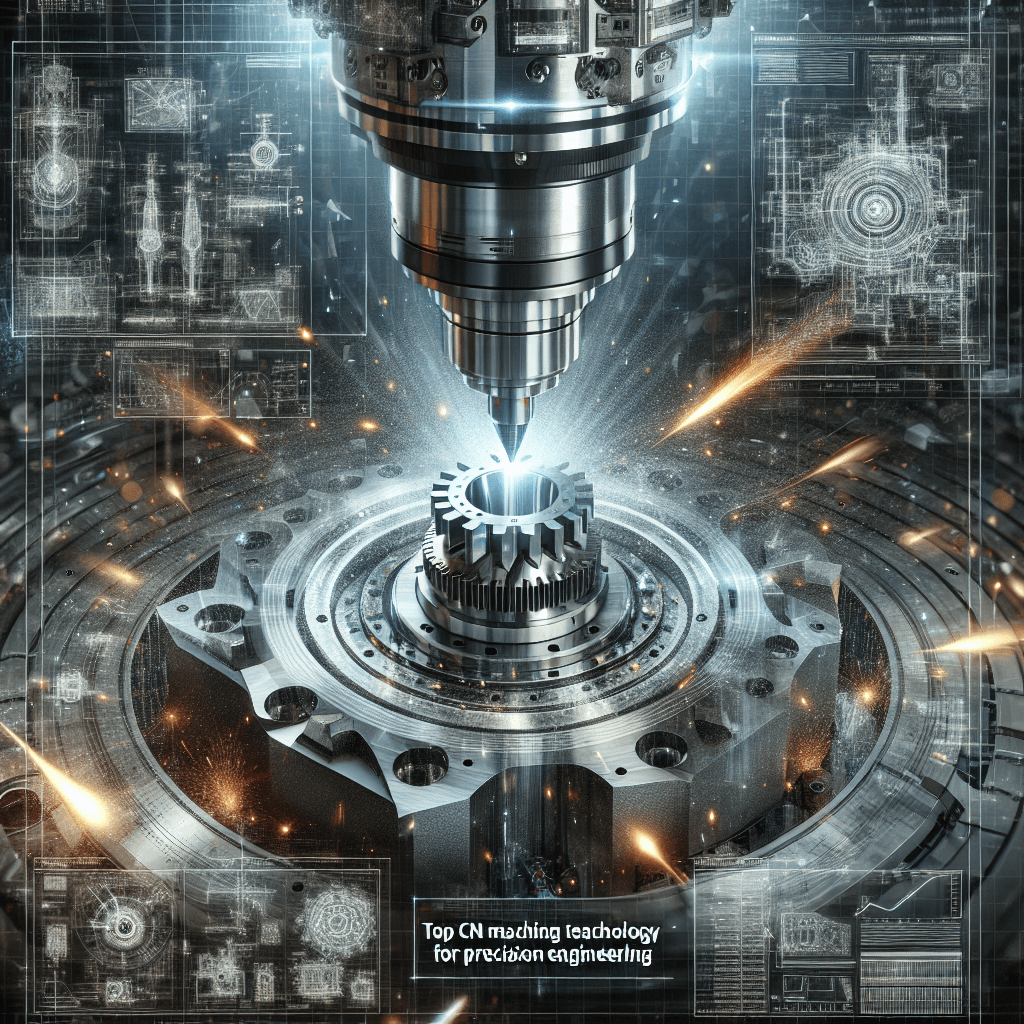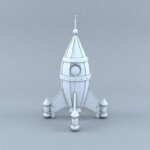CNC (computer numerical control) machining is a revolutionary technology that has reshaped the landscape of precision engineering. Through the controlled motion of machining tools, CNC machining enables manufacturers to create complex parts with exceptional precision, efficiency and repeatability. In this article, we’ll take an in-depth look at the core CNC machining technologies used in precision engineering today, exploring advanced methods, applications, and the principles behind them.
Table of contents
- 1. Introduction to CNC machining
- 2. Key technologies of CNC machining
- 2.1. Three-axis CNC machining
- 2.2. 4-axis CNC machining
- 2.3. 5-axis CNC machining
- 2.4. CNC turning
- 2.5. CNC laser cutting
- 2.6. CNC water jet cutting
- 2.7. CNC EDM (Electrical Discharge Machining)
- 3. Materials used for CNC machining
- 4. Benefits of CNC machining
- 5. Challenges faced by CNC machining
- 6. Future trends of CNC machining
- 7. Conclusion
- 8. Frequently Asked Questions
1. Introduction to CNC machining
CNC machining combines advanced computer technology with precision tools to create parts with high dimensional accuracy. CNC machines are programmed to follow controlled paths and perform complex operations with minimal human intervention. The versatility of CNC machining has allowed it to penetrate a variety of industries, including aerospace, automotive, medical devices and electronics.
The evolution of CNC machining
The origins of CNC machining can be traced to the 1940s and 1950s, when numerical control (NC) was first introduced. With the advent of computers in the 1960s, the technology evolved into CNC, allowing more complex programming and control of machining processes. Today, CNC machining continues to evolve with automation, artificial intelligence and Industry 4.0 initiatives.
2. Key technologies of CNC machining
CNC machining encompasses a variety of technologies to meet different manufacturing needs. Below, we detail the various CNC machining technologies that are critical to precision engineering.
2.1. Three-axis CNC machining
3-axis CNC machining is the most common form of CNC machining, in which the tool moves along three vertical axes: X, Y, and Z. This technology is ideal for creating flat surfaces, drilling holes, and machining simple geometries.
application:
- flat parts: Processing flat sheets and simple 3D shapes.
- drilling: Create holes and angled cuts.
- bagging: Create indentations or grooves in the material.
2.2. 4-axis CNC machining
4-axis CNC machining adds an extra axis of rotation (A-axis) to the standard 3-axis setup. This allows the machining tool to rotate around the X-axis, allowing the creation of more complex shapes.
application:
- complex geometric shapes: Ideal for creating cylindrical parts.
- 2.5D shapes: Suitable for designs with outlines and undercuts.
- Improve efficiency: Allows manufacturers to handle multiple aspects of a part in one setup.
2.3. 5-axis CNC machining
5-axis CNC machining enhances the capabilities of traditional machining by allowing tool movement along five axes: X, Y, Z and two additional axes of rotation (A and B). The technology is capable of producing complex shapes with extremely high precision.
application:
- Aerospace parts:Create complex yet lightweight structures.
- medical device: Manufactures precision implants and surgical instruments.
- Molds and tooling:Producing injection molds with complex geometries.
2.4. CNC turning
CNC turning utilizes a rotating workpiece and fixed cutting tools. This technology is mainly used for cylindrical parts. The turning process can produce external and internal features and is an important part of machining processes such as lathes.
application:
- axis: Manufacture of rods and tubes.
- cylinder:Producing parts of different diameters.
- Number of threads: Create threads and other helical features.
2.5. CNC laser cutting
In CNC laser cutting, a focused laser beam is aimed at the material, melting or vaporizing it to produce precise cuts. This method is ideal for cutting thin materials and is used in a wide range of applications from signage to complex designs.
application:
- Sheet metal processing: High-precision cutting of metal sheets.
- Acrylic and plastic: Engraving and cutting plastic parts.
- detailed pattern:Producing complex designs that require high precision.
2.6. CNC water jet cutting
CNC waterjet cutting utilizes a high-pressure water jet mixed with abrasive particles to cut materials. The technology is ideal for cutting hard materials and can create complex shapes without introducing thermal stress.
application:
- metal and stone: Cutting thick metal and stone (such as granite).
- composite materials: Suitable for cutting sensitive materials that cannot withstand heat.
- environmental considerations: Produces minimal waste and no harmful fumes.
2.7. CNC EDM (Electrical Discharge Machining)
CNC EDM is a non-traditional machining process that uses electrical sparks to erode material on a workpiece. This method is particularly useful for hard materials that cannot be machined using traditional methods.
application:
- work clothes: Produces precision molds.
- complex geometric shapes: Complex shapes are impossible to create with standard milling processes.
- hard metal: Handles metals such as titanium, tungsten and hardened steel.
3. Materials used for CNC machining
The choice of material significantly affects the results of CNC machining. A variety of materials can be efficiently processed, each with unique properties and applications.
Commonly used materials for CNC processing:
- aluminum: Aluminum is lightweight and corrosion-resistant and is commonly used in the aerospace and automotive industries.
- steel: Steel is available in a variety of grades and is favored in structural applications for its strength and durability.
- plastic: Materials such as polycarbonate and acrylic are used for lightweight components and prototypes.
- titanium: Preferred in aerospace and medical fields due to its high strength-to-weight ratio and biocompatibility.
- composite materials: Carbon fiber and fiberglass composites are becoming increasingly popular due to their excellent strength-to-weight ratio properties.
4. Benefits of CNC machining
CNC machining has transformed precision engineering by providing numerous advantages:
Main advantages:
- precision and accuracy: CNC machines can achieve tolerances of ±0.001 inches, allowing them to produce high-quality parts.
- Repeatability: CNC machining can produce identical parts in batches without any variation in quality.
- complex: Machining capabilities enable the creation of complex designs and shapes that are difficult to achieve with traditional methods.
- Material diversity: CNC machining can handle a variety of materials, providing manufacturing flexibility.
- automation: Enhanced automation reduces the need for manual intervention, thereby increasing efficiency and reducing human error.
- Cost effective: The ability to produce large quantities of components with minimal waste helps reduce production costs.
5. Challenges faced by CNC machining
While CNC machining offers many advantages, it also comes with challenges that manufacturers must address.
Common challenges:
- Initial setup cost: The investment in CNC machines and software can be significant, especially for small manufacturers.
- complex programming: CNC machine programming requires a skilled operator who is familiar with CAD/CAM software.
- Material limitations: Certain materials may cause processing difficulties due to their hardness or brittleness.
- maintain: CNC machine tools require regular maintenance to ensure accuracy and longevity, which can lead to downtime if not managed properly.
- technological progress: For some manufacturers, keeping up with rapid technological advances can be a challenge.
6. Future trends of CNC machining
As technological advancements continue to emerge, the future of CNC machining is about to change. Some trends to watch include:
Emerging trends:
- Automation and Robotics: Increase the integration of robotics in CNC machining processes to increase efficiency and reduce labor costs.
- IoT integration: The Internet of Things (IoT) will enable real-time monitoring and maintenance of CNC machine tools, thereby increasing productivity.
- Additive manufacturing hybrid: CNC machining combined with additive manufacturing technology enables superior precision and material performance.
- sustainable development practices: There is an increasing emphasis on sustainable practices in CNC machining, including material recycling and energy-efficient operations.
- AI-driven CNC machining: Use artificial intelligence algorithms to optimize machining processes, predict maintenance needs and improve tooling strategies.
7. Conclusion
CNC machining is an indispensable technology in precision engineering, providing advanced solutions for the manufacturing of complex components in various industries. From 3-axis setups to complex 5-axis machines, CNC technology continues to evolve, driven by innovation and the need for greater efficiency. CNC machining will play a vital role in shaping the future of manufacturing and engineering as manufacturers adopt emerging trends and overcome challenges.
By carefully selecting materials, understanding various machining techniques, and taking advantage of technological advancements, manufacturers can leverage the full potential of CNC machining to deliver high-quality products that meet market demands.
8. Frequently Asked Questions
1. What is CNC machining?
CNC machining is a manufacturing process that uses computer-controlled machines to create precision parts from a variety of materials. It offers high precision, repeatability and the ability to produce complex shapes.
2. What materials can be processed using CNC technology?
Common materials include metals such as aluminum, steel, titanium, and plastics such as acrylic and polycarbonate. Composite materials are also becoming increasingly popular in CNC machining.
3. What are the main types of CNC processing?
The main types include three-axis milling, four-axis milling, five-axis milling, CNC turning, CNC laser cutting, CNC water jet cutting, CNC EDM, etc.
4. Which industries benefit from CNC machining?
CNC machining is widely used in aerospace, automotive, medical devices, electronics and many other fields that require precision parts.
5. What are the advantages of CNC machining over traditional machining?
The advantages of CNC machining include greater accuracy, repeatability, material versatility, automation, and lower production costs in high-volume manufacturing.
6. What challenges do manufacturers face with CNC machining?
Challenges include high initial setup costs, programming complexity, material limitations, the need for regular maintenance, and keeping up with rapid technological advances.
7. How did CNC machining develop?
CNC machining is evolving through automation, IoT integration, hybrid additive manufacturing, sustainable practices, and AI-driven optimization to increase productivity and efficiency in the manufacturing process.
By understanding these aspects of CNC machining, companies can better leverage the technology to meet their precision engineering needs, driving innovation in today’s competitive landscape.
Daguang focuses on providing solutions such as precision CNC machining services (3-axis, 4-axis, 5-axis machining), CNC milling, 3D printing and rapid prototyping services.


















